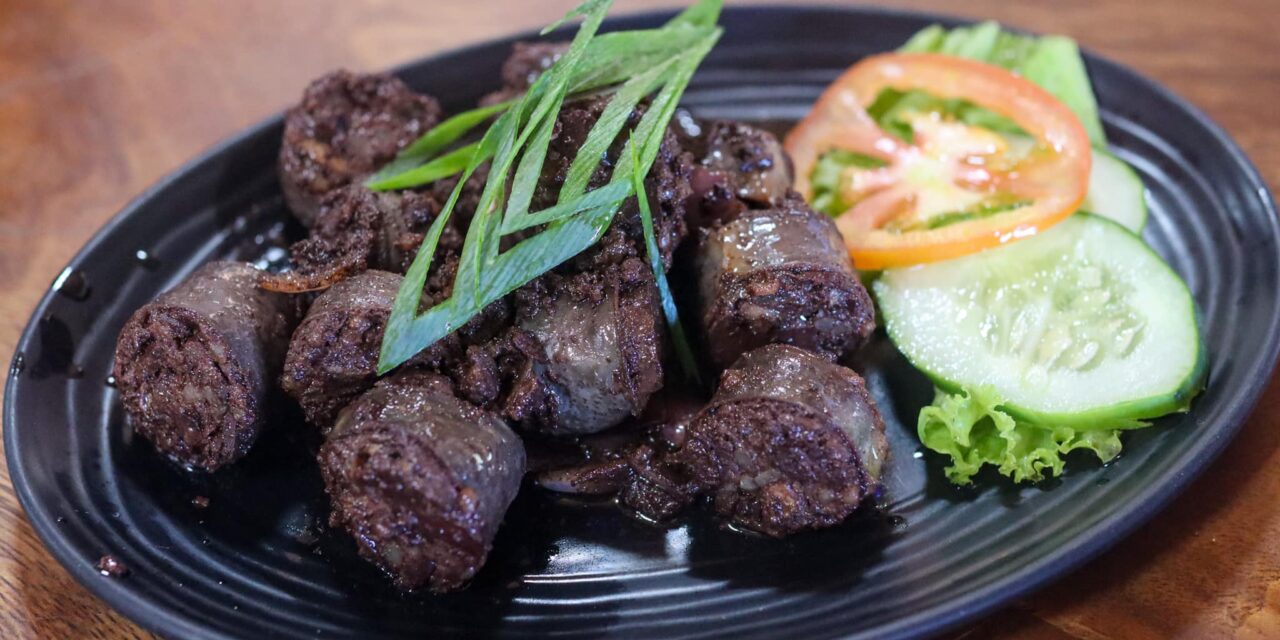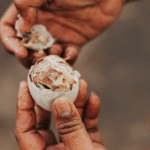Photo courtesy: John Sherwin Felix Facebook Page
If you’re a Filipino or a foreigner with a deep appreciation for Philippine gastronomy, chances are you’ve heard of dinuguan, the rich, savory blood stew often enjoyed with puto (rice cake).
But did you know that deep in the mountainous regions of northern Luzon, the Cordilleran people or the Igorots have their own unique version of a blood-based dish?
“Pinuneg”, as the Igorots call it, is a traditional blood sausage that has been passed down through generations among the indigenous tribes of Benguet, particularly the Ibaloi and Kankanaey. This delicacy, made from pig’s blood, fat, and a blend of spices, is encased in cleaned pig intestines, just like a typical sausage, but with a distinct cultural identity.
RECOMMENDED READS:
- How to Protect Your Skin During the Cold Months: 5 Tips for Filipinos Living in the Czech Republic
- Going Home for the Holidays? We Gotchu, Your OFW Christmas Travel Checklist is Here!
- Not-So-Exotic, Totally Yummy 6 Filipino Dishes to Try
- The Philippines’ Tabo Culture
- AirAsia Expands Routes: Direct Flights from Manila to Istanbul via Kuala Lumpur Begin November 14
A Dish Rooted in Tradition
In the past, Pinuneg was more than just food; it was a symbol of unity and tradition in the highlands. It was typically prepared during sacred rituals and cultural celebrations, like Cañao, a tradition that involved feasting, music, and sacrificial ceremonies.
During a cañao, animals (usually pigs and chicken) were offered in rituals for healing, bountiful harvests, and prosperity and for other relevant purposes. Every part of the pig was used, with its meat boiled and shared among attendees which they call as watwat, while the blood and intestines were carefully crafted into Pinuneg. This practice highlights the Cordilleran people’s deep respect for nature and their resourcefulness in utilizing every part of the animal.

Photo Courtesy: Igorot in the Czech Republic
How to Make Your Own Pinuneg
Curious about making your own Pinuneg at home? Even if you’re far from the Cordilleras, you can still try recreating this unique dish with a few essential ingredients:
Ingredients:
- Fresh pig’s blood
- Minced pork fat
- Salt
- Onions
- Garlic
- Leeks
- Large pig intestines (thoroughly cleaned)
Steps to Prepare:
- Gather Your Ingredients – If you live abroad, don’t worry! Many Asian stores carry these items. In the Czech Republic, try checking Macro, Kaufland, Sapa, or local Butcher shops (řeznictví) for the pig’s blood and intestines.
- Prepare the Ingredients – Finely chop the onions, garlic, and leeks. In a bowl, mix the pig’s blood with minced fat, salt, and spices until well combined.
- Stuff the Sausages – Carefully fill the cleaned intestines with the blood mixture. Tie the ends securely and use thread to create sausage links.
- Cook the Sausages – Boil the Pinuneg for about 30 minutes until firm. Alternatively, some traditional methods involve smoking the sausages for a deeper, richer flavor.
- Serve and Enjoy! – Best paired with steaming rice, Pinuneg offers a taste of Cordilleran heritage in every bite.
VIDEO COURTESY: WATCH ETAG TV ON YOUTUBE PREPARING PINUNEG
Pinuneg in Modern Times
Despite being a dish deeply rooted in tradition, Pinuneg is still making waves in contemporary Filipino cuisine. Restaurants in Baguio City and La Trinidad proudly feature this delicacy, showcasing the Igorots’ ingenuity in utilizing every part of the pig and their commitment to minimizing food waste.
As Filipino cuisine continues to gain global recognition, dishes like Pinuneg serve as a reminder of our rich culinary heritage, one that thrives on tradition, sustainability, and the deep connection between food and culture.
So, the next time you visit the Cordilleras, don’t miss the chance to savor this unique blood sausage and taste history in every bite!

Do you have a story to tell or a traditional food in your province?
Share us your thoughts!











